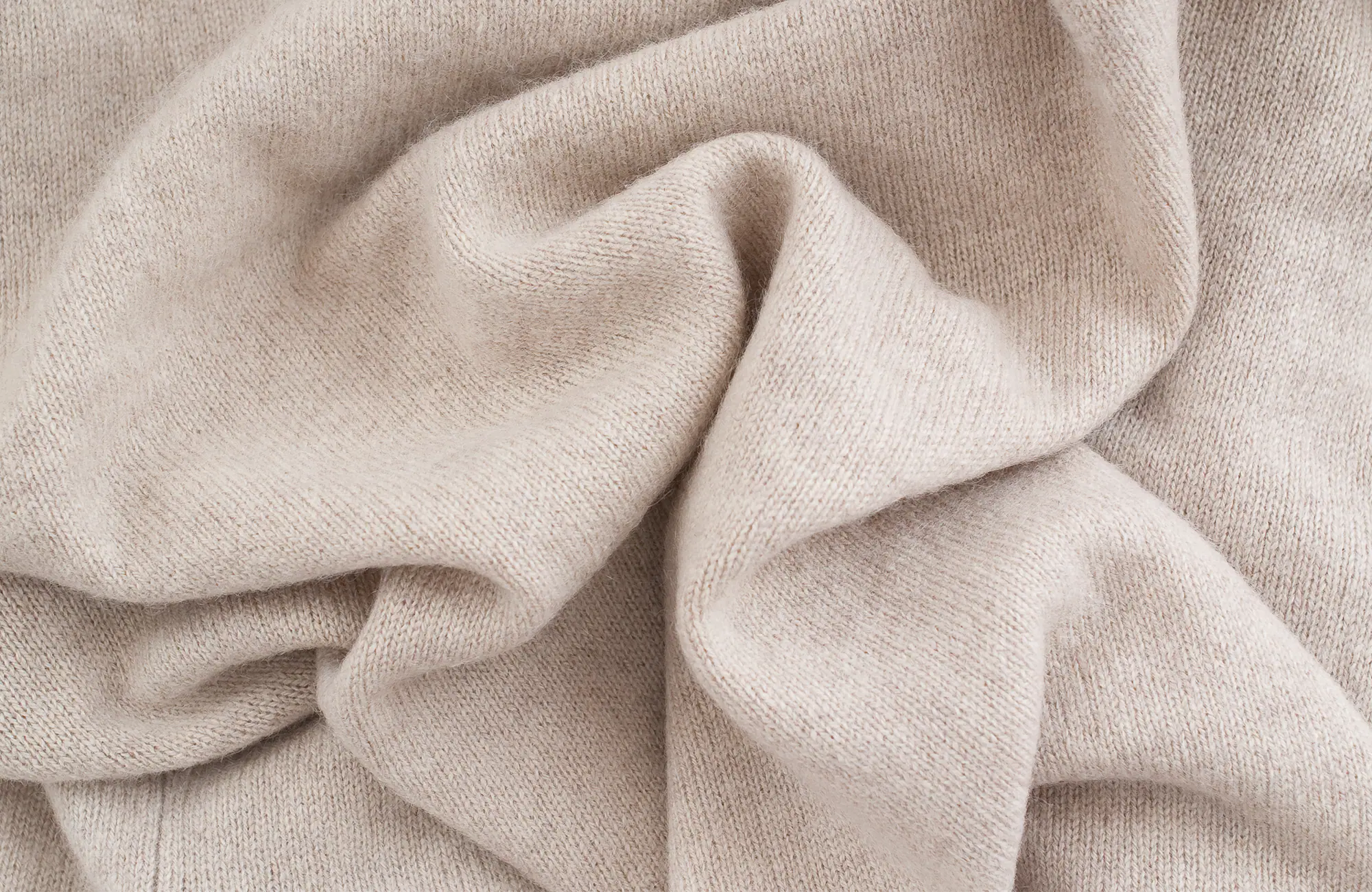Investing in cashmere clothing offers not only a touch of luxury but also serves as a strategic decision for your wardrobe. As consumers become increasingly conscious of the impact of their purchasing choices, understanding the market value and resale potential of cashmere garments can guide smarter, more sustainable fashion decisions. This article explores the intrinsic value of cashmere, the influence of brands on resale prices, and current trends in the resale market, providing readers with practical insights that can enhance their understanding of cashmere as both a luxury item and a financial investment.
Table of Contents
Cashmere Quality vs Fast Fashion Trends
In today’s fashion landscape, the debate between cashmere quality and fast fashion trends has intensified, particularly as consumers become more conscious of their purchasing decisions. On the one hand, cashmere represents a commitment to quality, craftsmanship, and sustainability, while fast fashion epitomizes rapid production and disposable clothing. This article explores the stark contrasts between these two approaches, highlighting why investing in cashmere is not just a style choice but a sustainable one as well.
The Allure of Cashmere Quality
Cashmere, often referred to as “the diamond fiber,” is coveted for its unparalleled softness, warmth, and luxurious feel. Harvested from the undercoat of cashmere goats, this fiber requires meticulous care in harvesting and processing, leading to its premium status.
- Softness: Cashmere fibers are finer than human hair, contributing to its exceptional softness and comfort.
- Insulation: Cashmere provides excellent insulation, making garments warm without the bulk.
- Durability: With proper care, cashmere pieces can last for years, showcasing their investment value.
The quality of cashmere is not solely determined by the fiber itself but also by the crafting process. High-end brands often invest in skilled artisans who employ traditional techniques that preserve the integrity of the fibers, producing garments that are not only beautiful but also enduring.
Fast Fashion: Style Over Substance
Fast fashion brands, in stark contrast to cashmere manufacturers, thrive on producing large quantities of clothing at a rapid pace. While this model offers consumers the latest trends at accessible prices, it often comes at the expense of quality and sustainability.
- Rapid Production: Fast fashion brands can turn designs into products in a matter of weeks, promoting an ever-changing inventory.
- Poor Quality: Many fast fashion garments are made from synthetic materials, designed to be worn a few times before being discarded.
- Environmental Impact: The fast fashion industry is a significant contributor to textile waste and pollution, raising ethical concerns among consumers.
While fast fashion appeals to impulsive buyers looking for the latest styles, it often leaves them with garments that barely endure a season. This cyclical consumption pattern not only diminishes the value of clothing but also contributes to an unsustainable fashion ecosystem.
The Middle Path: Investing in Quality
As consumers become more aware of the environmental and social implications of their buying choices, there has been a noticeable shift towards valuing quality over quantity. Investing in cashmere can be seen as a proactive response to fast fashion’s pitfalls, aligning with a more sustainable lifestyle.
By choosing cashmere, consumers are not merely purchasing an article of clothing; they are investing in:
- Artisan Craftsmanship: Many cashmere brands focus on sustainable practices, ensuring that their products are ethically produced.
- Longevity: A well-cared-for cashmere piece can serve as a timeless staple in a wardrobe, transcending seasonal trends.
- Resell Value: High-quality cashmere tends to retain its value and can be resold, making it a more financially sound investment in the long run.
In conclusion, while fast fashion offers immediate gratification, cashmere offers a lasting legacy of style and sustainability. Consumers are increasingly recognizing that the true cost of clothing extends beyond the price tag, making thoughtful choices that reflect their values and commitment to responsible fashion. As you consider your wardrobe, ponder this: would you prefer fleeting trends or enduring quality?
Sustainable Production Practices in Cashmere
As the fashion industry leans increasingly towards sustainability, the cashmere sector is making significant strides in adopting eco-friendly production practices. As a material known for its luxury and warmth, cashmere also holds potential for ethical production that respects animal welfare and minimizes environmental impact. Below, we delve into the innovative methods and principles shaping sustainable cashmere production.
Responsible Sourcing of Raw Materials
The essence of sustainable cashmere lies in its sourcing. Traditional cashmere production involves grazing goats in the vast steppes of Mongolia and China. However, irresponsible grazing can lead to land degradation and desertification. Sustainable brands are now prioritizing:
- Certification Programs: Many producers are working with organizations like the Sustainable Cashmere Initiative, which promotes responsible practices, ensuring herders follow animal welfare and environmental standards.
- Ethical Herding Practices: Adopting rotational grazing techniques helps maintain grasslands, allowing flora to regenerate and reducing soil erosion.
Eco-Friendly Processing Techniques
Once the cashmere fibers are sourced, the processing phase presents additional opportunities for sustainability. Traditional processing methods often involve harsh chemicals, but leading cashmere producers are shifting towards greener alternatives:
- Natural Dyes: Sustainable brands are increasingly using natural dyes derived from plants and minerals instead of synthetic ones. This reduces chemical runoff and enhances the biodegradability of the final product.
- Water Conservation: Innovative methods, such as closed-loop water systems, allow for the recycling of water during washing and dyeing processes, significantly minimizing water use and pollution.
Focus on Transparency and Traceability
In recent years, consumers have become more conscious of where their products come from. Sustainable cashmere brands are responding by offering enhanced transparency. This includes:
- Traceable Supply Chains: Modern technologies like blockchain allow consumers to trace the journey of their cashmere from goat to garment. This traceability ensures ethical practices at every stage.
- Detailed Information: Brands are increasingly providing information about their sourcing practices, herders, and even the environmental impact of their production methods to educate consumers.
Commitment to Community and Fair Trade Practices
Supporting local communities is a vital aspect of sustainable cashmere production. By investing in the livelihoods of herders, brands can ensure a fair return for sustainable practices:
- Fair Wages: Many ethical cashmere brands commit to paying herders a living wage, encouraging the continuation of traditional herding practices that protect the environment.
- Community Collaboration: Sustainable producers often collaborate with herding communities to develop best practices in animal care and land use, fostering a partnership that benefits everyone involved.
Innovative Recycling Programs
As the circular economy gains traction, sustainable cashmere brands are increasingly investing in recycling initiatives:
- Cashmere Recycling: Some companies offer programs to recycle old cashmere garments, re-spinning fibers into new products. This not only reduces waste but also extends the life cycle of cashmere textiles.
- Upcycling Initiatives: Collaborating with designers to create new garments from pre-owned cashmere can lead to unique pieces while promoting sustainability and reducing the demand for virgin fibers.
By focusing on these sustainable production practices, the cashmere industry is evolving to meet consumer demand for ethical luxury. As brands continue to innovate and prioritize environmental stewardship, they reinforce cashmere’s position not just as a symbol of luxury, but as a commitment to a more sustainable future. The transition towards sustainable cashmere production is not just beneficial for the planet; it also enhances consumer appreciation for the craftsmanship and heritage behind this beloved material.
Longevity of Cashmere: Care and Maintenance Tips
Cashmere, known for its exceptional softness and luxurious feel, can indeed be a cherished part of your wardrobe for years, if not decades. However, this delicate fiber demands specific care and maintenance to ensure its longevity. Here, we offer practical, expert tips to help you protect and prolong the life of your cashmere garments, transforming them from a mere splurge into a prized investment.
1. Proper Washing Techniques
Washing cashmere requires a gentle approach to avoid damaging its fibers. Here are some effective methods:
- Hand Washing: Fill a basin with cool water and a mild detergent specifically formulated for wool or delicate fabrics. Immerse the garment, gently agitating the water with your hands. Avoid excessive rubbing or wringing, which can stretch the fibers.
- Machine Washing: If you prefer using a washing machine, select the delicate or wool program. Place the cashmere item in a mesh laundry bag to prevent snagging. Always use cold water and a gentle detergent.
- Dry Cleaning: While hand washing or machine washing can suffice for regular care, professional dry cleaning may be necessary for stubborn stains or to maintain shape for high-end pieces.
2. Drying with Care
How you dry your cashmere is just as crucial as how you wash it. Here’s how to dry your garments to keep them in excellent condition:
- Do Not Wring: After washing, gently press out excess water without twisting or wringing the fabric to prevent distortion.
- Flat Drying: Lay the cashmere flat on a clean, dry towel, reshaping it to its original form. This approach helps maintain its shape and structure while it dries.
- Avoid Direct Heat: Keep cashmere away from direct sunlight and heat sources, as these can cause fading and drying out of fibers, leading to brittleness.
3. Storage Solutions
When the season changes and it’s time to store your cashmere, proper storage is crucial. Implement the following strategies:
- Clean Before Storing: Always ensure that your cashmere is clean prior to storage to avoid attracting moths or other pests. Leftover food particles or stains can lead to damage.
- Use Breathable Materials: Store cashmere in breathable cotton bags rather than plastic to prevent moisture buildup, which can lead to mildew or moth infestations.
- Fold, Don’t Hang: To maintain shape, fold cashmere items instead of hanging them, as hanging can stretch the fibers and form unsightly creases.
4. Pilling and Maintenance
Pilling is common in cashmere as the fibers become loose with wear. Fortunately, it can be managed effectively with these tips:
- Use a Cashmere Comb: Invest in a specialized cashmere comb or a fabric shaver to gently remove pills without damaging the fibers.
- Regular Grooming: Incorporating a quick combing session into your routine every few wears helps to maintain a polished look, ensuring your cashmere retains its allure.
5. Avoiding Common Mistakes
Being aware of common pitfalls can help in the upkeep of cashmere. Avoid the following:
- Hot Water and High Heat: Avoid hot water and high-heat drying methods, as they can shrink cashmere irreparably.
- Harsh Chemicals: Steer clear of bleach and fabric softeners which can deteriorate the fibers, opting instead for gentle detergents formulated for delicate clothing.
- Ignoring Labels: Always refer to the care labels on your garments. Each piece may have specific instructions tailored for its unique blend of fibers.
By embracing these care and maintenance practices, you can ensure that your cashmere investments not only last but also continue to provide you with warmth and elegance for years to come. In a world where fast fashion prevails, cherishing and maintaining quality items like cashmere fosters a sustainable approach to fashion, echoing a commitment to longevity over fleeting trends. As you nurture your cashmere pieces, you’ll appreciate their timeless luxury even more.
Market Value and Resale Potential of Cashmere Clothing
When it comes to high-end fashion, cashmere clothing stands out not just for its unparalleled softness and warmth, but also for its market value and resale potential. As consumers become more discerning about their clothing purchases, understanding these economic aspects can significantly influence buying decisions. Here’s why cashmere pieces are not only luxurious additions to your wardrobe but also wise financial investments.
The Intrinsic Value of Cashmere
The value of cashmere is rooted in its production process. Cashmere wool is harvested from goats that live in high-altitude regions, which results in a resource that is both limited and labor-intensive to produce. Each goat yields only a small amount of cashmere each year, making it a rare commodity. This scarcity contributes to a higher retail price compared to traditional wool or synthetic fabrics, providing an inherent value that consumers are willing to pay for quality.
Brand Influence on Resale Prices
Brands play a vital role in determining the resale potential of cashmere pieces. Established luxury brands such as Chanel, Burberry, and Prada often maintain a strong resale market due to their reputation for quality and exclusivity. When these brands release cashmere garments, their resale prices often continue to appreciate, particularly if the item is a limited edition or part of a beloved collection.
On the other hand, cashmere pieces from lesser-known or mid-tier brands may not enjoy the same level of resale success. Therefore, when investing in cashmere garments, consumers might consider not just the piece itself, but also the brand’s reputation and demand within the marketplace.
The Resale Market: A Growing Trend
The resale market for cashmere is thriving, with platforms like The RealReal and thredUP offering tailored sections for luxury and sustainable items. This trend reflects a larger shift toward sustainable fashion choices, as consumers are increasingly inclined to buy secondhand items. Cashmere clothing often retains its condition longer than fast fashion alternatives, making it a desirable option for resale.
- Condition: Items in impeccable condition often fetch higher prices.
- Provenance: A documented history of ownership, such as original receipts and screenshots of authenticity, can enhance value.
- Popularity: Classic styles tend to sell better than trendy pieces, which may lose their appeal quickly.
Longevity and Care Impact on Value
Another factor contributing to the resale potential of cashmere is its durability. With proper care, high-quality cashmere can last for many years, often becoming more desirable as it ages. This longevity is a key selling point in resale markets, as buyers look for items that will not only serve them well but also stand the test of time. The meticulous care and maintenance of cashmere, including washing it delicately and storing it properly, can enhance its lifespan and overall resale value.
Investment Piece Vs. Fast Fashion
Investing in cashmere as opposed to fast fashion represents a shift towards sustainable consumerism. Cashmere is viewed as an investment piece, where the cost per wear diminishes significantly over time. In contrast, fast fashion trends lead to high turnover rates, ultimately resulting in clothes that are often discarded after a season. The enduring appeal of cashmere, combined with its potential for resale, makes it a smart choice for the conscious consumer.
Conclusion: A Smart Fashion Investment
Overall, cashmere clothing not only represents luxury and comfort but also embodies a strategic investment in one’s wardrobe. With the right selection, care, and understanding of the resale market, consumers can enjoy both the immediate benefits of wearing cashmere and the long-term financial advantages. Whether you see it as a wardrobe staple or a collectible piece, the market value and resale potential of cashmere clothing make it a timeless choice.
Cashmere clothing is renowned not only for its luxurious feel and warmth but also as a wise financial investment. Its inherent value stems from the labor-intensive and limited production process. Established luxury brands tend to maintain strong resale markets, making cashmere pieces from reputable names more likely to appreciate in value. In contrast, lesser-known brands may not offer the same resale success, emphasizing the importance of brand reputation when making a purchase.
To maximize the longevity and resale potential of cashmere, proper care is essential. Hand washing or using a gentle machine cycle, flat drying, and meticulous storage can help maintain the fiber’s condition. Additionally, investing in high-quality cashmere as opposed to fast fashion contributes to sustainable consumerism, as cashmere pieces often remain desirable for years, allowing for a cost-effective wardrobe staple.













